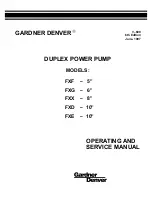
18
Aquarea air-to-water heat pumps - Planning and installation manual - 01/2018
Product Description
19
Aquarea air-to-water heat pumps - Planning and installation manual - 01/2018
Product Description
characterised with a product or composite energy efficiency label. Energy efficiency is calculated
according to uniform criteria and indicated on the label as energy efficiency class (A++(+) to G).
Economical and Environment-Friendly
More than 75% of the end energy utilisation in the household is used for heating and hot water
provision. At the same time, the fuel prices (oil, gas, wooden pellets) are subject to high price
variations and are becoming more and more expensive.
On the other hand, with an Aquarea heat pump, up to 75% cost-free ambient heat can be used.
Only the remaining component of 25% power needs to be sourced for the operation of the heat
pumps. In comparison with a purely power heating, the power sourcing is thus reduced to a
quarter for the same heat production.
Comparison of the power requirement of an Aquarea heat pump with a purely electrical
heater for the same heat production
80
%
20
%
1
2
1 Conventional electrical heater
2 Aquarea heat pump
Power
consumption
1 kW
1 kW
Power
output
1 KW
4.74 kW
1
2
As against heating systems using fuel, the dependence on oil prices and uncertain energy
imports is thus reduced. In addition, the part of renewable energy fraction of the electric power
consumed is already around 20% and shows a rising tendency. Other than the ambient heat,
therefore, the power used for heat pumps is also going to increasingly come from renewable
energy.
Similar to the COP for the heating mode is the power factor for the cooling mode (EER = energy
efficiency ratio) defined as the ratio of the emitted cooling power to the consumed electrical
power.
EC Eco-Design Directive
The eco-design directive 2009/125/EG provides the framework for establishing the determina
-
tion of the EC-wide valid requirements applicable for the product design, with which the environ-
mental loads and the CO
2
-emission by energy consumption-related products are to be reduced
throughout during its total life cycle. The eco-design directive must be implemented in every EC
member state into national law (e.g. in Germany by the Energy consumption relevant products
act (EVPG 2008) or in Austria by the Eco-design Ordinance (ODV 2007)).
55°C
35°C
41
dB
64
dB
kW
kW
3
1
0
2
/
1
1
8
5
1
0
2
A
++
A
+
A
B
C
D
E
F
G
A
++
A
++
3
4
WH-SDC03H3E5 / WH-UD03HE5
2
3
3
3
7
8
9
10
1
2
3
4
5
6
WH-ADC030 WH-UD03HE5-1
A++
A+
X
X
X
11
15
16
19
17
20
21
18
12
13
a
b
c
d
14
Example of Product Energy label (left)
1 Manufacturer
2 Room heating function
3 Energy efficiency class scale A++ to G
4 Sound power level in inside rooms
5 Sound power level in outdoor area
6 Year of validity of the ordinance
7 Product name
8 Energy efficiency class for room heating function at
55 °C/ 35 °C, inflow temp.
9 Heating capacity (kW)
10 Directive number
Example of Composite Energy Label (right)
11 Product name
12 Composite system
13 Combination options:
a Solar system
b Hot water tank
c Control
d Additional heat source (e.g. boiler)
14 Year of validity of the ordinance
15 Room heating function
16 Energy efficiency class scale for room heating
function (A+++ to G)
17 Energy efficiency class scale for room heating
function
18 Hot water preparation function with indication of the
bleed profile (3XS to 4XL)
19 Energy efficiency class scale for hot water prepara
-
tion function (A+++ to G)
20 Energy efficiency class scale for hot water prepara
-
tion function
21 Directive number
According to this eco-design directive (or ErP directive - Energy related products), among oth-
er apparatus, (e.g. boilers and heat pumps), hot water tanks and domestic ventilation devices
must fulfill product-specific minimum requirements in respect of the energy efficiency. Moreover,
individual products as well as product combinations (e.g. heat sources plus controls) must be
Summary of Contents for Aquarea B1
Page 2: ...Notes ...
Page 116: ...Notes Notes ...













































